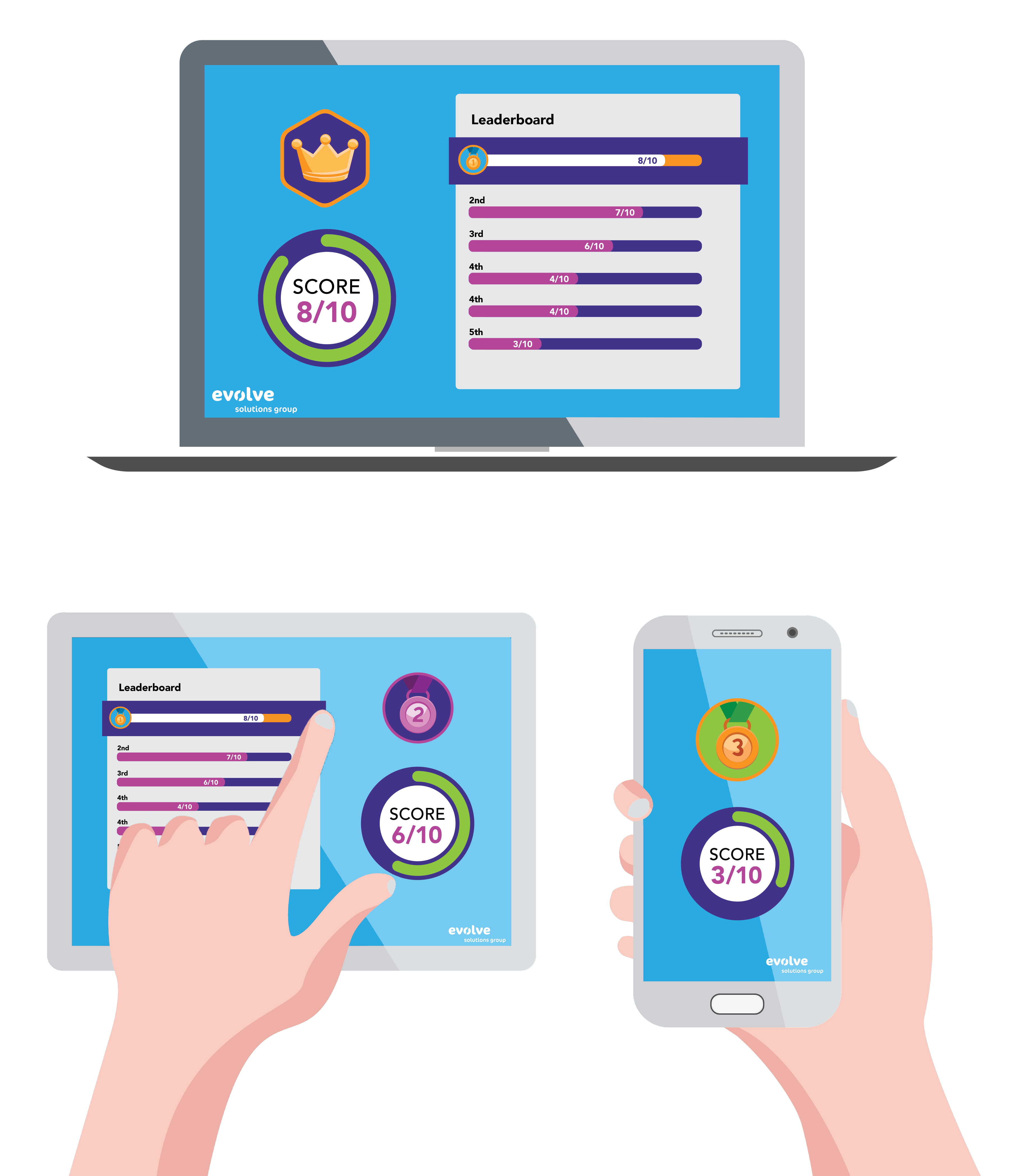Gamification in learning is more than just a fad – in fact, “80% of US workers believe game-based learning is more engaging.” Gamification can increase productivity and improve employee motivation, and should be used to augment and support your learning initiative.
Types of Gamification
Take your corporate training to a whole new level with gamification. By incorporating game-like elements, you can motivate and incentivize learners, improve learning retention, and help to foster connection among employees through healthy competition. The different types of gamification you can implement are:
- Basic Games: Easily engage employees with quizzes and trivia games. Everything from bragging rights and leaderboards to small prizes can motivate and bring out the competitive nature of your staff while keeping learning fun.
- Serious Games: Interactive, learn-by-doing methods bring the material to life for trainees as they play out scenarios based on complex business case studies.
- Animated or Builder Games: Animations capture your audience’s attention but using a storytelling approach and building upon the lessons reinforce the training. Taking otherwise dry content and making it look visually pleasing can take some of the stress about training and learning away.
- Augmented or Virtual Reality Simulations: Immersive gaming brings the training to real life. This game style is especially effective in teaching safety protocols or how to handle equipment safely. For more about the practical applications of AR/VR click here.
Putting Gamification to Use as Part of the Learning Experience
While it will never take the place of traditional training, gamification can be used to augment learning in any field, which results in greater retention of information and improved ROI. The industries below have all benefited greatly from the addition of gamification and simulation.
Military & Aerospace:
- Training: Standard classroom training, theory, discussion, and self-study build the fundamentals the trainee needs to learn, before taking them to the real world.
- Gamification: Flight, equipment, and combat simulations are a cost-effective way of doing hands-on training that reinforces the lessons allowing the trainee to gain confidence before the real deal.
Manufacturing:
- Training: Learning the basics of the process, equipment demonstrations, and job aids are vital elements of working in a manufacturing environment.
- Gamification: Put the training to use through virtual/augmented reality simulations and QR scanners to incentivize and motivate employees, while building team morale.
Technical Skills:
- Training: The basic building blocks of technical skill training are videos and demonstrations, practice, and assessments.
- Gamification: Take it to the next step through virtual worlds or online games and offer rewards or incentives to keep learning and developing.
Stand-alone Gamification Gone Wrong
While there are many reasons to include gamification in the learning experience, it isn’t the be-all, end-all training method. It should be considered just one prong of the training process. Here are a couple of examples of when companies forgot that:
Business Simulation: At the start of a management training program, new managers had their baseline supervisory skills informally tested. Unfortunately, few earned points as they hadn’t been taught the concepts yet.
Recipe Builder: New hires were told to “pass the time” playing in a recipe builder game with the intent that they would build recipe knowledge and fluency. Instead, they tended to learn bad recipe-building habits that often resulted in attrition.
If you don’t forget the fundamentals, gamification or simulations can be extremely beneficial as part of a blended learning strategy. Check out our latest eBook “What’s the difference between Gamification and Simulations?” if you want to learn more and schedule a consult with us to get started.

